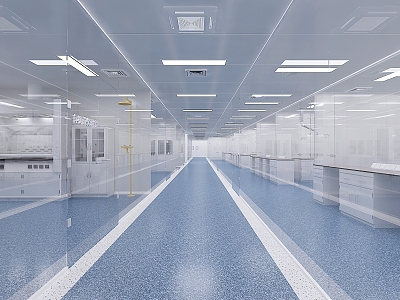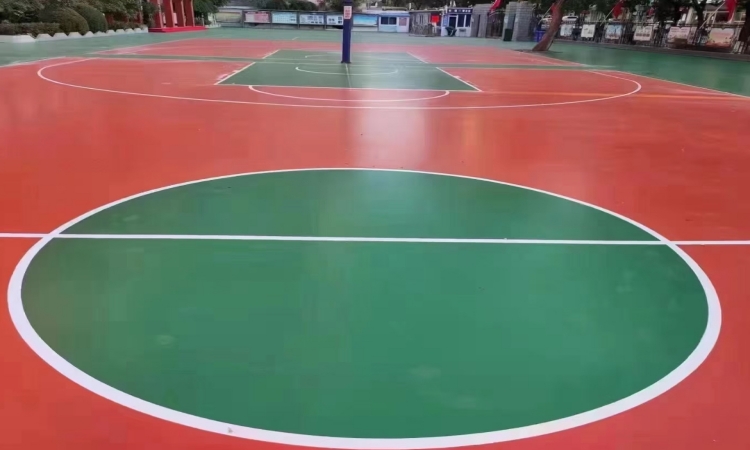In today's pursuit of green environmental protection and high-performance materials, water-based acrylic floor paint has gradually become the preferred solution for floor coating in industrial, commercial and outdoor places with its unique advantages. This article will comprehensively analyze its performance characteristics, application scenarios, construction technology and precautions to help you gain a deeper understanding of this innovative material.
1. The core advantages of water-based acrylic floor paint
Environmentally friendly and non-toxic
Water is used as a diluent, no curing agent is required, the volatile organic compound (VOC) content is extremely low, there is no odor during the construction process, and it is harmless to the human body and the environment.
Excellent weather resistance
It is resistant to ultraviolet rays and rain erosion, and can maintain color stability after long-term exposure to the outdoors. It is suitable for open-air places such as stadiums and pedestrian walkways.
High wear resistance and impact resistance
The paint film has high hardness (up to H grade) and excellent wear resistance (1000g/10000 turn loss ≤0.1g). It can withstand frequent mechanical friction and heavy impact, and is suitable for high-load environments such as workshops and parking lots.
Convenient construction
Single-component design, no need to adjust the proportion, simple construction process, fast drying speed (surface drying ≤ 0.5 hours, actual drying ≤ 6 hours), saving time and cost.
Both decorative and functional
Rich colors, smooth and easy to clean surface, and can also improve gloss and waterproof performance through topcoat to meet the aesthetic and practical needs of different scenes.
2.Applicable scenarios: multi-field coverage from industry to life
Sports venues: such as basketball courts and tennis courts, providing a comfortable sports experience with anti-slip cushioning.
Outdoor public areas: children's playgrounds, community trails, weather resistance to ensure long-term use.
Industrial and commercial places: workshops, warehouses, parking lots, wear resistance and pressure resistance to extend the life of the ground.
Special environments: hospitals, schools and other places that require antibacterial and mildew resistance, easy to clean properties to maintain hygiene.
3. Detailed explanation of construction process
The construction of water-based acrylic floor paint must strictly follow the steps to ensure the final effect:
Base treatment
The new floor needs to be maintained for 28 days, remove dust and oil (can be cleaned with thinner water), and ensure that the base surface is dry (water content ≤6%) and flat (voids ≤2.5mm).
If the base surface is too alkaline, it needs to be neutralized by pickling with 5%~8% hydrochloric acid.
Primer construction
Roll or brush the sealing primer, and cover it with a thin coating (6-8㎡/kg) to enhance the adhesion of the base surface.
Middle coating construction
The topcoat is mixed with 80-100 mesh quartz sand and scraped with a thickness of 0.3-0.5mm, and polished to improve the pressure resistance.
Topcoat construction
Roll or scrape the topcoat in two times (4-5㎡/kg) to ensure uniform color and no missing coating.
Topcoat (optional)
Spray silicone acrylic topcoat to improve brightness and stain resistance, with a dosage of about 6㎡/kg.
4.Key construction precautions
Environmental requirements: Construction temperature ≥10℃, humidity ≤90%, avoid working in the sun or rainy days.
Curation cycle: The topcoat needs to be dried for 24 hours before people can go on it, and it will be completely cured after 7 days. The curing time needs to be extended in low temperature environments.
Safety protection: When handling old coatings, it is necessary to prevent lead dust from being inhaled, and pregnant women should avoid contact.
5.Comparison with epoxy floor paint
Water-based acrylic floor paint is superior to epoxy floor paint in outdoor weather resistance, environmental protection and construction convenience, but epoxy paint is more outstanding in chemical corrosion resistance and gloss. Therefore, the former is more suitable for outdoor and high humidity environments, while the latter is suitable for indoor precision places.



